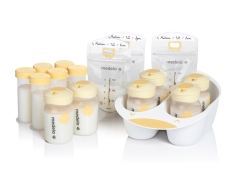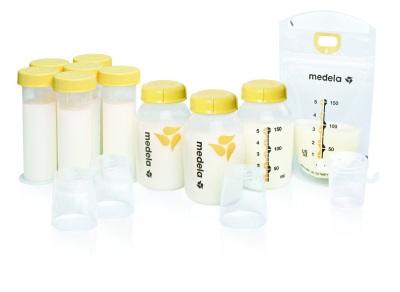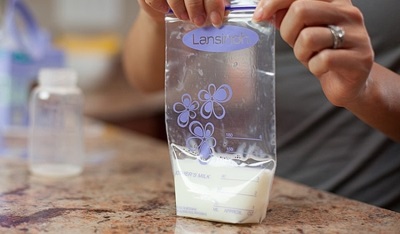Is it possible to freeze breast milk and how to do it correctly?
Breastmilk is the best food for an infant. It provides a growing children's body with nutrients that are important to it. And if circumstances force a mother to be away from the crumb for a long time, the woman begins to wonder if it is possible to save breastfeeding. Freezing seems like a good way out. Is it really possible to freeze breast milk and how to do it correctly?
The reasons
You can decide to freeze breast milk for a variety of reasons. For example, mom is going to have a trip, treatment, or will have to temporarily stop breastfeeding for another reason. Having made a reserve in a frozen form, the child can be fed with expressed breast milk for the time of the absence of her mother's breast.

Is it useful?
Of course, milk, which directly goes to the baby from her mother's breast, is the most useful, but the difference in the composition is insignificant. As shown by a study of the Russian Academy of Medical Sciences, proper freezing had practically no effect on its qualitative composition, content of biologically active and mineral substances.
If you need to choose - a mixture or expressed milk that was frozen by mom, then the answer is obvious. Partially, minerals and vitamins are destroyed when frozen, but useful proteins and other components that cannot be found even in the best adapted mixtures remain.
Be sure that breast milk retains its beneficial properties not only by direct feeding of the crumbs, but also during storage. At the same time storage periods depend on the way you want to save it. If it will stand at room temperature, then drink such a product should be within three to six hours.
Having sent the tank with expressed milk to the refrigerator, you can store it for up to 48 hours. During this time, his antibodies will not spoil him. This method of storage is preferred because it retains macrophage cells that help the crumbs resist diseases. If you have to keep the milk longer, it should be frozen.
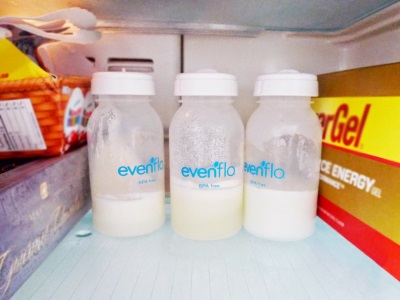
In a conventional freezer it can be stored for up to three months, and in freezers with deep freezing it can last for six months or more.
Note: you can not re-freeze the milk, if after feeding it you have left.
Choosing capacity
Capacities in which you can freeze mother's milk can be:
- glass bottles;
- plastic containers;
- special packages for freezing.
Glass is considered to be a more preferred and environmentally friendly material, and when selecting plastic containers, it should be ensured that the containers are safe for children (they should not contain phthalates and should be labeled with the words “BPA free”).
Freezing bags are a very practical and convenient way of storage. In addition, they take up little space in the freezer.
Stages of freezing
Do not freeze milk:
- stood for 2 hours at room temperature;
- from the refrigerator to extend the shelf life;
- thawed (for example, remaining after feeding).
The first stage - pumping. Usually for this purpose they use a breast pump and express breast milk into special containers that go to it in a set. However, you can express it with your hands. Write on the jar the date of decanting.
The second stage is cooling in the refrigerator. You can not put just expressed milk directly into the freezer. Let it cool first in the refrigerator, but not more than 12 hours.
The third stage is the freezing of containers with milk. Put them in a conventional freezer, or better - in a device that provides a temperature of minus 18-20 degrees. So it can be stored longer.
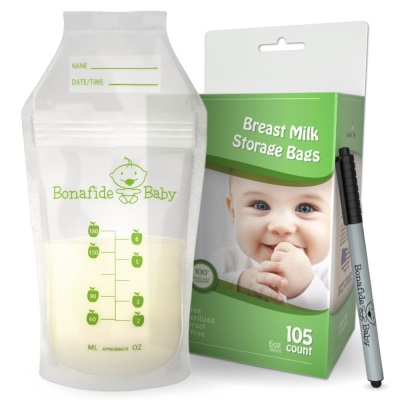
Defrosting is a very crucial stage on which its nutritional value depends. Proper defrosting of breast milk discussed in another article.
Tips
- Do not fill containers completely. Always leave about a centimeter of free space or 3/4 of the volume, since the milk expands when frozen.
- It is important to wash your hands before decanting.
- On each tank write the date of decanting. So it will be convenient for you to first use the containers, the date on which is earlier.
- Freshly expressed milk can be added to the already frozen milk, if its amount is less than the volume of the frozen product.
- If the milk is frozen, you can not freeze it again.
